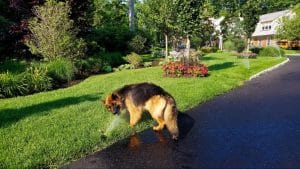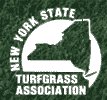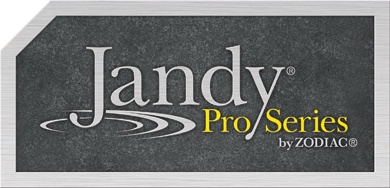
In the Northeast, we revel in the warm summer days when we can relax poolside, entertain friends in our outdoor living spaces, and just be outside. But some years, the weather seems to go from cool-and-drizzly spring to full-force July heat. Don’t get us wrong, we’re taking advantage of the longest days of the year—but our lawns can get pretty stressed out from the heat.
Dealing with drought in New York, Connecticut and New Jersey is practically a summer rite of passage. Some years are drier than others. But you can bet on a stretch of time when the grass gets thirsty, plants are parched, and the lush landscapes we maintain need more attention to stay healthy.
There are ways to keep your lawn healthy when summer heats up. Here are five strategies to help your property thrive during the “dog days.”
#1 Avoid Short-Cuts—Maintain the Proper Mowing Height
In spring and early summer, our lawns are growing fast and require frequent mowing. But heat slows down turf growth, and mowing schedules should be adjusted accordingly. When turf is cut too short during drought, the sun and heat evaporate moisture from the soil quicker. By raising the mowing height by up to 25 percent, the slightly longer turf will help cool the soil surface, reduce weed pressure and minimize watering requirements.
As a rule of thumb, you should never remove more than 1/3 of the grass blade when mowing. And during times of drought, grazing less off the top will help protect your lawn.
#2 Water Wisely—Time Irrigation Right

During a drought, the best way to water is less often and more deeply. Water gradually to allow moisture to soak into the soil so it will reach the turf’s root zone. A landscape pro can adjust your irrigation system watering schedule to accommodate your community’s water restrictions (if applicable) and assure that your lawn gets the moisture when and where it is needed.
During an extended drought, focus on watering areas that tend to dry out faster and are more susceptible to damage, such as on slopes or lawn spaces that are near heat-reflecting surfaces. Also, prioritize high-visibility areas.
#3 Traffic Control—Minimize Your Footprint
If possible, reduce foot traffic on your lawn during drought. Drought stresses out your lawn, and adding more “pressure” to the surface can cause damage to the grass that could require renovation and repair. So, keep the party on the patio. Encourage the kids to enjoy the pool rather than treating your front lawn like a soccer field. Once the drought is over, you’ll be glad you spared your grass any unnecessary beating.
#4 Adopt Lawn Care Best Practices
Too much of a good thing is—well, not so good. Fertilization is a critical component of a lawn care program that provides nutrients to turf. But, if you fertilize a lawn too much during drought, you’re basically forcing growth (which takes energy) during a time when the turf’s resources are focused on survival. The result can be burn-out. In particular, using quick-release nitrogen fertilizer during drought can cause damage.
Fertilization throughout the summer, along with weed and disease control, can preserve a lawn and protect it during stressful drought times. But don’t treat fertilizer like the answer to green-up during dry times. It’s just not healthy for your lawn.
#5 Focus on Lawn Recovery

Lawns naturally grow dormant during drought—it’s self-preservation. So, a slight browning out of grass during especially dry periods of time does not mean the grass is dead. Actually, it is saving its resources, and once the heat drops and moisture is restored to the soil, whether by irrigation or Mother Nature, healthy grass that is on a regular lawn care program will gradually become green again.
To aid in restoration, we recommend aeration to open up the soil so air, water and nutrients can more easily reach grass roots. You might need to overseed your lawn, or reseed areas of lawn with thinning turf. Continuing a lawn care program, while improving the soil profile, will help your lawn recover and make it more resilient.
Don’t Let Hot Weather Stress Out Your Lawn
Call Neave Landscaping for a free lawn analysis. We’d love to share some strategies for saving water and keeping your lawn healthy during the hot summer days.
Let’s talk. Contact us in Westchester, NY at 914-271-7996, Hudson Valley at 845-463-0592, Connecticut at 203-212-4800 and New Jersey at 201-591-4570. Or, fill out this simple form and we’ll get in touch with you.






















